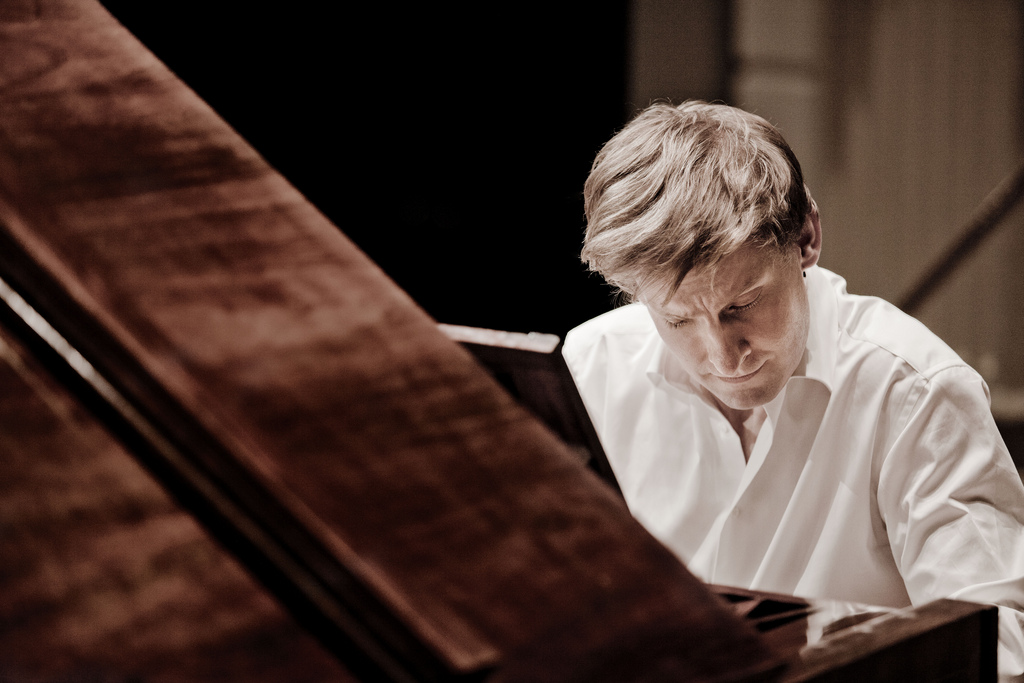
I haven’t been a big fan of the fortepiano as a living instrument, so close to the modern piano yet infinitely distant in the range and quality of sound it can produce. But a new all-Mozart album from Kristian Bezuidenhout may have begun to change my mind.
- Classical Music 101: What Does A Conductor Do? - June 17, 2019
- Classical Music 101 | What Does Period Instrument Mean? - May 6, 2019
- CLASSICAL MUSIC 101 | What Does It Mean To Be In Tune? - April 23, 2019
 The 33-year-old South African-born artist has made a specialty of the fortepiano, a keyboard-and-hammer instrument that paved the way for the modern piano. It was a late-18th century inspiration for many composers and performers, including Wolfgang Amadeus Mozart. So to hear Mozart on a fortepiano is to hear it more or less the way the composer heard it himself.
The 33-year-old South African-born artist has made a specialty of the fortepiano, a keyboard-and-hammer instrument that paved the way for the modern piano. It was a late-18th century inspiration for many composers and performers, including Wolfgang Amadeus Mozart. So to hear Mozart on a fortepiano is to hear it more or less the way the composer heard it himself.
Because Bezuidenhout lives and breathes this instrument, has a brilliant sense of programming and is, above all else, a consummate artist, he manages to find more expressive nuance in his primitive little keyboard than the bulk of people who have the benefit of a 9-foot Steinway at their disposal.
This is Bezuidenhout’s fourth Mozart album for Harmonia Mundi. Like the first three, he has set it up with a master’s feel for pacing.
This disc begins and ends with the D minor Fantasia (K397). Mozart’s manuscript is lost, so it’s not clear how he meant the piece to work, but, in its original, seemingly incomplete form, it serves as a great prelude — in this case to the D Major Piano Sonata (K394). The Fantasia returns at the end of the album, this time in an 1806 version completed by August Eberhard Müller, wrapping up the very familiar G Major Piano Sonata (K283).
In between we get the brilliant C Major Prelude and Fugue (K394) from 1782, written in a fit of enthusiasm after Mozart had fallen in love with a stack of music by Bach and Handel he found in the library of a Viennese patron. The Prelude is more of a Fantasia, really. The Fugue is a very accomplished exercise in three-part counterpoint that combines Baroque and Classical styles.
Bezuidenhout also has a lot of fun with 12 Vanriations on ‘Je suis Lindor’, from 1778.
There isn’t a dull moment or on off note on this mesmerizing, gorgeously played disc. In the right hands, even an imperfect instrument can become a master storyteller’s best friend.
For more details on the album, click here.
And here are two background videos. The first on the making of this album — as Bezuidenhout explains, the secret to getting the right spirit of Mozart’s keyboard music is to treat it like opera. The second is about the fortepiano itself, which the artist describes as an instrument “designed to speak, not to sing.”
Bring on the rhetoric.
John Terauds
- Classical Music 101: What Does A Conductor Do? - June 17, 2019
- Classical Music 101 | What Does Period Instrument Mean? - May 6, 2019
- CLASSICAL MUSIC 101 | What Does It Mean To Be In Tune? - April 23, 2019



